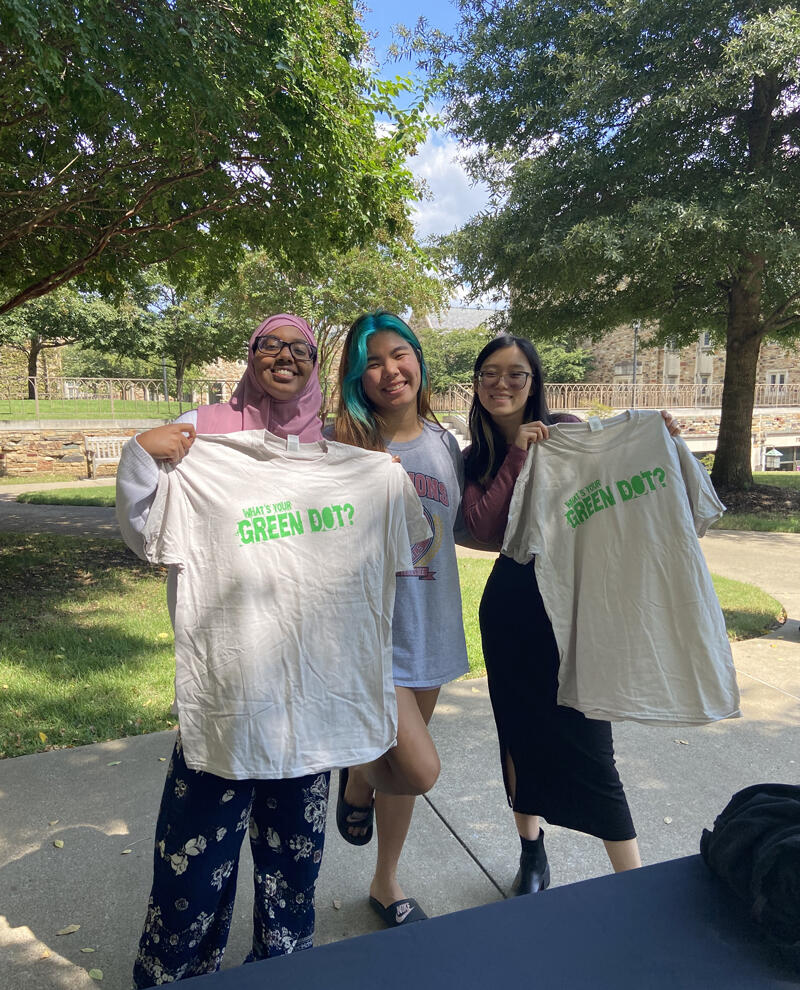Proactive Bystander Intervention
- Small, daily choices we make to communicate two new norms to the people in our spheres of influence. These are things you do before harm ever happens. They help to establish the norms that:
- Violence is not okay and will not be tolerated.
- Everyone needs to do their part to help.
- Examples include having Green Dot stickers on your laptop or water bottle, sharing bystander intervention stories, or creating plans with friends when you go out to try and keep everyone safe.
Reactive Bystander Intervention
Reactive bystander intervention is what we think about when we hear bystander intervention. It means that the person sees a situation and does something to stop or prevent harm from happening. Green Dot teaches three ways to intervene. They are direct, delegate, and distract. It is important to not that you should only intervene in a situation if you feel that it is safe for you to intervene.
Three Ways to Intervene:
Direct
Check in yourself with the person being harmed or person doing the harm.
Examples:
- Check in with someone who looks uncomfortable and ask them if they are OK.
- Tell someone who is about to do something that may harm another person that their behavior isn’t acceptable.
Delegate
Get someone else to intervene. This type of intervention recognizes that sometimes other people may be better suited to intervene.
Examples:
- Tell someone that they may want to go check on their friend.
- Let a party host know that there is something going on that they should look into.
Distract
Create a diversion to defuse the situation; i.e, an action that stops a situation for a few seconds to give everyone a chance to recollect.
Examples:
- Set off your car alarm
- Ask for directions
To schedule a Green Dot Session, please contact the Office of Prevention and Well-being Education
